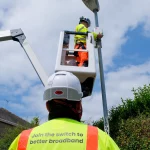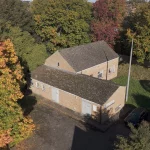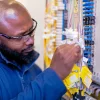Grain Goes EBITDA Positive as UK FTTP Broadband Network Covers 250k Premises

Alternative network operator and ISP Grain has today announced that their gigabit-capable Fibre-to-the-Premises (FTTP) broadband network has grown to cover 250,000 UK premises (up from 220k in May 2024) and 43,000 customers (up from 30,000). But crucially, they also did as expected (here) and went EBITDA positive during the quarter ended March 2025.
The ability to achieve a positive EBITDA (i.e. earnings before interest, taxes, depreciation, and amortization) usually indicates that a company’s core operations are becoming profitable. Grain today said their total operating costs per customer continued to “fall rapidly” to c. £21 by the end of the year, with “total operating costs flat across the year despite significant growth in customers“.
The operator’s full fibre network can currently be found in parts of around 60+ UK locations (plus over 150 new build housing developments), which includes a lot of modest-to-large sized patches of various urban cities and towns like Leicester, Liverpool, Accrington, Grimsby, Cleethorpes, Scarborough, Carlisle, Barrow-in-Furness, Hartlepool, Hull, Newport, Sunderland, Blackburn and so forth.
Advertisement
The latest progress update reveals that Grain’s homes ready for service (RFS) grew by 24% during the financial year to cover over 250,000 premises. Customer numbers were also up 58% at 43,000 with take-up growing steadily from 13% to 17% over the last 12 months, despite adding 50,000 new premises during the year.
Grain said they were continuing to invest in network expansion. The operator added that it was now “fully funded” and is due to turn cashflow positive on its current footprint in 2026, “generating a surplus of EBITDA more than covering the cost of connecting customers and servicing the interest payments on its debt“.
Grain CEO, Richard Cameron, told ISPreview:
“The Altnet market has experienced significant challenges in recent years, with many providers struggling to generate sufficient returns to service their debts and deliver a return to their shareholders. This is often due to high costs, low take-up and the high connection costs required to connect customers to PIA based networks. I am pleased to say that these are problems which Grain doesn’t face, putting us in a unique position having already built a sustainable business over the long term.
Also, Openreach and other Altnets describe a home ready for service as one which has a live network at the top of a pole or in a chamber, somewhere near a premise, which could be over 100 metres from the home, still requiring substantial network investment and potentially signed wayleaves to connect a customer. Grain describes a home ready for service as one that already has a live network at the boundary of each premise.
Grain connects homes for about a quarter of the cost that Openreach incurs to connect a home. As a result of this Grain doesn’t have the large capital expenditure overhang costs to connect customers that the rest of the industry faces. This coupled with an efficient customer acquisition model makes Grain unique with new customers paying back in the first year of their contracts.
We are excited about the future of Grain and the competition it offers, allowing more customers to make the move to Full Fibre broadband, at affordable and transparent prices.”
The network operator said they planned to continue investing additional capital into the expansion of its footprint, “given the strong financial returns being generated” and are currently also offering broadband customers a price freeze offer (i.e. prices locked until 2027).
Mark is a professional technology writer, IT consultant and computer engineer from Dorset (England), he also founded ISPreview in 1999 and enjoys analysing the latest telecoms and broadband developments. Find me on X (Twitter), Mastodon, Facebook, BlueSky, Threads.net and Linkedin.
« CEO of Broadband Altnet GoFibre Becomes Interim Boss of Wildanet UPDATE





















































“The ability to achieve a positive EBITDA usually indicates that a company’s core operations are becoming profitable and likely generating positive cash flow.”
EBITDA provides no indication of cash flow. Given the CAPEX intensive nature of an altnet, it’s very unlikely they are cash positive at this stage.
‘Grain connects homes for about a quarter of the cost that Openreach incurs to connect a home. As a result of this Grain doesn’t have the large capital expenditure overhang costs to connect customers that the rest of the industry faces’
How does Grain do this?
They use Mikrotik routers in their street cabinets doing NAT and a shared 1Gbps EAD circuit for the cabinet backhaul!
Guess you get what you pay for…
Sticky backed plastic.
They only install in certain locations, there’s about 20 roads or less in my town. If they went further out the cost per house would probably rise, There is zero expansion, I do wonder how many customers they actually have here.
The more alt – nets gain a market share, the greater we can get Internet access to the wide parts of the UK. This will force the two big ISP / suppliers (BT and VM) to change its tactics, we still pay far too much for respectable speeds and due to the nature of the Internet, so much relies on it so we needs a faster and better more prosperous UK.
From knowing what I do about Grain’s operations, including cgnat with no IPv6 and worst of all totally locking down consumer routers so even a WiFi password change needs a request raising, I hope they are swallowed up by the bigger players. I’m astounded but not totally surprised to learn of the Mikrotek routers in cabs.
Thanks Alexa
Clearmind? Not on the evidence of this post.
“…other Altnets describe a home ready for service as one which has a live network at the top of a pole or…”.
“Grain describes a home ready for service as one that already has a live network at the boundary of each premise.”
Does that mean they only use ducting to the boundary? If poles are used on the street, do they add a drop line and coil it at the end of the drive/front door?
Grain don’t use poles, underground ducting only